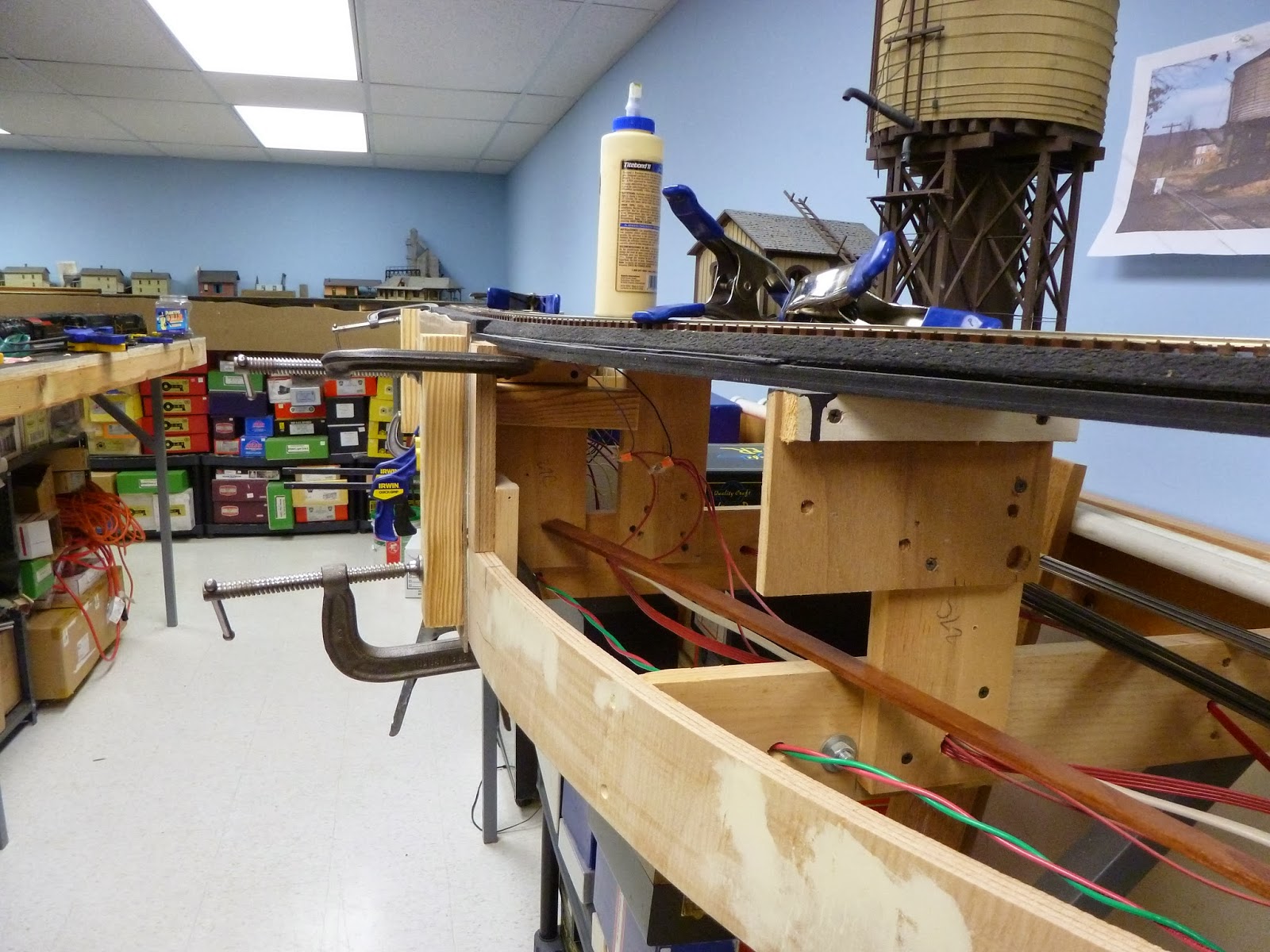Well, we have a lot of low bench work where the base is even with the top of the chord. So, this goes a lot faster as I do not have to shape the top side or coat the back as it is solidly against the wood. This is at the start of the Northumberland yard area.
We do have some tight corners to cover and I have a sheet of masonite resting on the bench work to enable me to see how far it will go.
It goes up pretty fast but again is limited by the time it takes the glue to dry. I have to come up with a way to cover the joint with some sort of body putty.
This gives you a view of how this is going on. I am maintaining about a 1/8" lip above the yard surface to allow for ballast and cinders. I will have to be careful when climbing on the top to avoid crushing this.
It takes a lot of clamps to ensure that the fascia stays tight to the curves when making a corner.
Here is a view down the aisle with fascia now on both sides. I have to develop a color for this that will not attract the eye. I am thinking of a flat dark smoke grey to be slightly darker but similar to the color of the legs. By the time you read this I have traveled another 50 feet along the bench work.



















